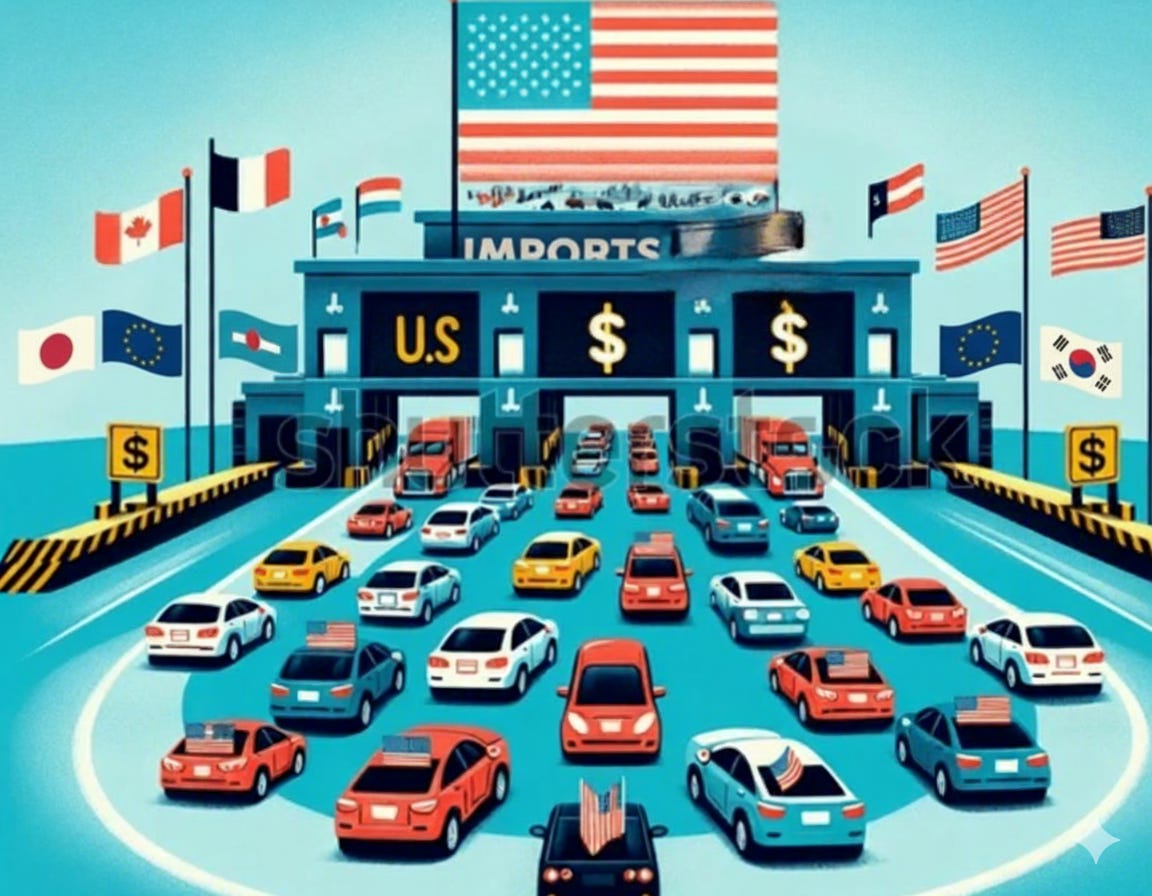How US Auto Tariffs Have Impaired Profitability and Stunted Growth at Global Carmakers
A 15% to 25% tariff is like a 15% to 25% price cut: it wipes out profits, which is why Q2 alone saw a 40% downside in carmakers' profits.
US auto tariffs cut profits at carmakers by 40%: The top 15 carmakers that make up 96% of US auto demand saw a negative impact of $11.4 billion on their Q2 profits and a 47% reduction in operating margins (see Figure 1).
Five of the top 15 carmakers saw losses in Q2: Ford, Honda, Nissan, Stellantis, and Mazda all saw losses in their Automotive divisions in Q2. Nearly all carmakers warned that tariff headwinds will get worse from Q3 due to a larger impact from imported parts and lower levels of vehicles imported before the tariffs went into effect.
$21 billion of EV-related capex is “paused” in Canada: Investment plans worth $21 billion for new EV factories and battery plants at Honda, Stellantis, Ford, and others have been paused in light of the US tariffs. VW’s $5 billion battery plant in Canada was set to supply its EV production base in the US and Mexico from 2027, but now faces 25% tariffs, which could impact production plans in the US.
Carmakers are refraining from price hikes so far: New prices for the 2026 model year are so far only up by $1,162 or 3.2%, among popular models, which is lower than last year’s rise of 3.6%. While some imports like the Subaru Outback saw a $5,000, or 16% price hike, other imported brands at GM, Hyundai, Toyota, and Audi are only up by $1,041, or 2.7% on average (see Figure 7). For weaker rivals who need to raise prices to cover the cost of auto tariffs, this makes it hard to pass on the tariff costs to customers.
Tesla may lose the most from US auto tariffs despite locally producing all of its cars: The removal of the $7,500 EV subsidy in the US after this month is bearish for Tesla, because without this subsidy, its prices instantly spike by 15%. If they don’t cut prices to make up for the removal of the $7,500 subsidy, they face almost certain loss of market share, given their old model lineup. If they do cut prices, their thin margins will be under even more pressure. For Tesla, this is a “lose-lose” situation (more details below).
Despite big downward revisions to EPS, auto stocks have outperformed the S&P 500: Since Q2 earnings results, auto stocks have outperformed the S&P 500 by 2.8% on average, while the Street cut EPS estimates by 17% for 2025 and 14% for 2026. This has caused valuations to balloon (see Figure 10). The average 2026 PER of 5.9x (ex-Tesla) before Q2 results has risen by 23% to 7.3x, currently (Tesla’s PER is up by 16% to 141x). None of the major auto stocks have seen their valuations decline since Q2 results, but Hyundai and Kia have risen the least (for good reasons, as detailed in Section 3).
US auto tariffs are not a “one-off” like the pandemic: The market seems to be viewing the US tariff issue as a “one-off”, like the chip shortage during the pandemic, whereas it should be seen as the “new normal” of low profitability and barbaric competition: a 15% to 25% tariff is the same as a 15% to 25% price cut, which would wipe out any profits at most carmakers, if applied to their full lineups. Moving production to the US means higher costs with little guarantee of the higher volumes needed to make up for it. Passing on the cost of tariffs to the consumer will lead to lower sales amid stiff competition. In light of this, it’s difficult to understand why auto stocks have outperformed the S&P 500.
Another bad quarter should lead to a proper sell-off: Among the top 15 carmakers in the US market, only VW has seen its stock decline since Q2 results—by only 1.6%. The rise in shares of Toyota and GM is somewhat understandable due to their resilience in the face of tariff headwinds, but the rest of the sector should have sold off more. Section 3 below goes into which stocks could see the most downside.
Keep reading with a 7-day free trial
Subscribe to Motorhead to keep reading this post and get 7 days of free access to the full post archives.



